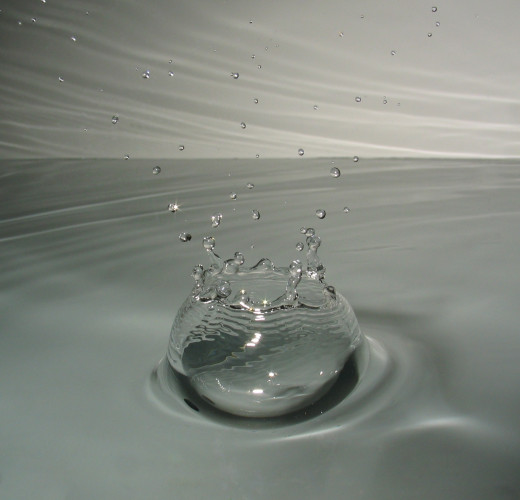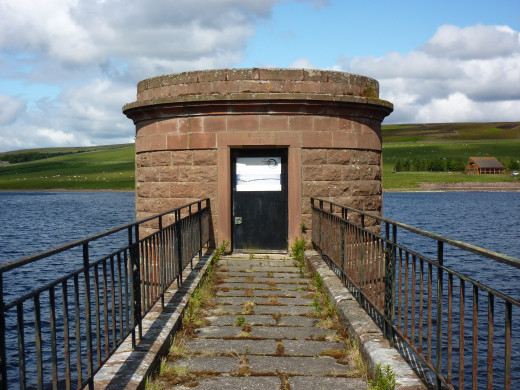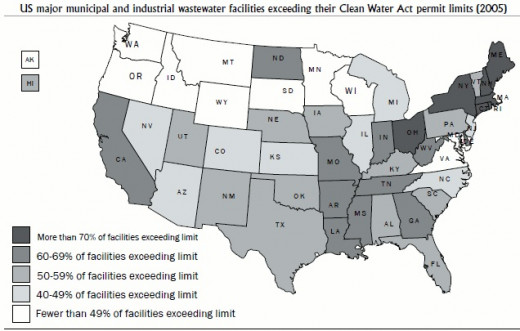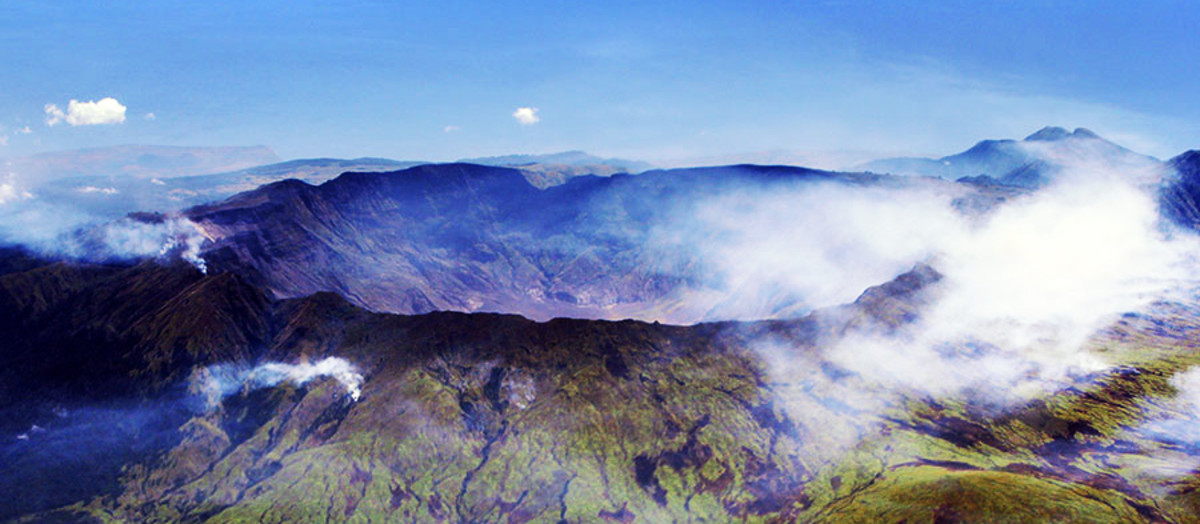Water Must Be America's Priority!

Early Years of Water Management
Water is one of the most basic needs of life. Without water, you cannot have life! Not that long ago, life and health was threatened by the poor quality of water around the world. The US, the UK and Europe applied the best science of the time to clean up our water, and plagues of cholera, typhoid and the other great plagues of the past were brought to an end. Today, here in America we have enough water for every community and the quality of water is pretty darn good. Then why is it that water wars are breaking out around America?
Water is important. Throughout history, entire civilizations have risen and fallen on the availability of water. When humanity first started creating what we now call civilization, we settled down and learned to farm, and that meant learning how to irrigate the land. Without water and water management, civilization was at risk.
Today when we look back on “lost” civilizations, empires that seemed to collapse without any obvious reason, it almost always goes back to water. Mesopotamian civilization collapsed because their overuse of water destroyed their farmland. Centuries later and thousands of miles away in Angkor in Southeast Asia, a prolonged drought brought the end of the Angkor civilization in South-East Asia. Civilization after civilization fell because of a lack of water or through water mis-management.
The Importance of Pure Water
Of course, the story of water is not just about the quantity of water, it’s also about the quality. You can use a wide range of water sources to keep your lawn green or to feed crops, but the water that people drink needs to be especially pure. Until the last couple of hundred years, it wasn't understood that many diseases came from the water we drink. Waste water and drinking water mingled in pipes and channels underneath major cities. London was wracked by water borne plagues throughout the 19th century, until the typhoid outbreak on Broad Street. This lead to an understanding of the connection between contaminated water and disease.
Of course, now that we understand these links, it doesn't mean that we can always act upon them. Around the world, 2,000 children under five die every day because of bad water. That’s been reduced by almost 50% since a decade ago, but it still has a long way to go.
Time is Money, but so is Water!
America Grows Up!
What about America today? The quality of water in America today is pretty good. According to the last Environmental Protection Agency (EPA) study, 89% of community water systems are in compliance with EPA regulations. Of course, that doesn't mean that every city has all of the high-quality water it needs. When we move away from the cities, the quality and quantity of water is at even greater risk. For many years, industrial pollution was the greatest risk to our water supplies, but today there are many more risks that are more difficult to address. Some water problems may not even be problems. The science is still being debated. And of course, the growing acceptance of global climate change also means that there must be a growing acceptance that water supplies will not meet our water needs.
America has enormous natural resources. We have lakes and rivers and other water resources that makes it seem that we have water enough for anything! But our water resources have not always been the way they are, nor has the quality of water always been as good. For that matter, public water supplies have not always been public.
In the earliest days of American history, we were a country of small towns. When a town was founded, the site had to have access to water. It wasn’t just water for drinking. Boom towns needed water for mining, log camps that grew into towns needed water to power saw mills, farming towns needed water for agriculture. When railroads began to cross the nation, trains were run on steam. Early trains could only go 10 miles or less before needing more water or fuel. Later, this range was extended up to 100 miles. Over time these water stops evolved into full blown towns and cities. Small stops that failed to prosper were often labeled “Jerkwater” towns, after the boilerman’s motion of “jerking” a chain to start water flowing into the boiler. When trains abandoned steam for diesel power, smaller water stops were also abandoned and became ghost towns.
Whether a town was founded by settlers, evolved out of a water stop or had a different origin, a growing town will quickly outgrow it’s early water sources. That just doesn’t apply to little towns in the mid-west. Even New York City’s water supply had to evolve as population grew. In response to the yellow fever epidemic of 1795, New York City created a private/public firm called the Manhattan Company, to build wells, water pipes and reservoirs to ensure a supply of pure water. They didn’t do a very good job of it, and health problems continued for decades, and culminated in the Cholera epidemic of 1832. When New York had a population of just 250,000, 3,000 died in the outbreak. Meanwhile, the Manhattan Company went on to pursue it’s real passion, spawning the Manhattan bank in 1800 and eventually evolving into today’s Chase Bank.
The Unpleasant Story of Cholera
Reservoir in England

Water Needs Change Again!
As America grew, water needs changed. More people meant more water. New industries meant competition between water consumers. And the transition from an agricultural to an industrial economy meant new needs for water, and new sources of water contamination. The Federal Clean Water Act, would raise requirements for America’s drinking water. As water management became ever more complex, the growing question became, “Who is going to pay for all of this?”
The answer was that some waterworks would be developed privately, and some publicly. In the first half of the 20th Century iron and steel became plentiful and cheap, and heavy construction equipment dramatically reduced the cost of construction. All critical issues for laying water pipes and building reservoirs. The maturing of medicine and the chemical industry allowed the development of plants to filter and chlorinate water to effectively destroy harmful germs. The invention of sophisticated hydraulic systems allowed the efficient movement of water from where it was plentiful to where it was needed.
Since it's earliest days, America has dealt with water contamination. As we've seen, in cities and towns across the world, more than a century ago disease was the major concern. As our industries became more complex, the types of pollution that that entered our water supply also became more complex. In Pensacola Florida, which the EPA rated as the worst municipal water system in America, the water has high levels of trichloroethylene and tetrachloroethylene, chemicals typically used in dry cleaning.
These complex, but small molecules, cannot be removed from the water by older filtration systems. Riverside California and Las Vegas show significant amounts of uranium in the water. The EPA doesn't yet regularly test for pharmaceuticals, but independent tests are showing more and more medical compounds in our water. A new generation of filters and water processing technology will be needed to deal with these new forms of pollution.
While small and middle-sized towns in America were growing into Cities by the 60s and 70s, there was money to support growth. Bigger towns had more tax revenues, and growing cities could afford to build new water reservoirs and infrastructure. In California, Arizona and New Mexico, towns were turning into sizable cities faster than anywhere else in America. But it didn’t last forever. Soon, agriculture and rising population drained water faster than it could be replenished by rain and runoff. Older communities stopped building new water systems and expanding into new water sources. Money shifted from building to maintaining. Young towns were now aging cities, with aging water infrastructure. Municipalities that once had state of the art technology found themselves with equipment that was 50, 75 or 100 years old. In Detroit, which has faced every imaginable fiscal problem, the city needs reduce the cost of their water department by $900,000,000 over the next decade. In order to meet these goals, Detroit will reduce the water department’s staff from 2,000 workers to around 700. Only hall of those workers will be employed by the city, with the other half outsourced to a private firms. That could be a big step towards the return of private water firms.
A New Day for Water?
Inadequate and aging water facilities were further neglected as a rising tide of small towns went bankrupt. California has been the epicenter of municipal bankruptcies. Not surprisingly, it has also been the center of water wars. With disinvestment in water systems has gone hand in hand with the largest and longest droughts in California history. Farmers, fishermen and citizens are competing for water. We've known for some time that water supplies were being contaminated by chemical waste from the oil industry, but new forms of oil drilling, such as fracking use different chemicals that aren't part of waters testing. Chemical runoff from agriculture and home lawns have been found in drinking water for years, but until very recently no one thought to test for the antibiotics and pharmaceuticals that are used in the cattle industry. Or for that matter, the anti-depressants and painkiller that humans take.
The most recent testing, which goes beyond normal Environmental Protection Agency (EPS) tests, shows exactly that sort of contamination as these complex chemicals are being found in measurable quantities in our drinking water. We don’t yet know if these chemicals are dangerous, but we do know that it will take a new generation filtration technology to get rid of these chemicals.
The future of water in the 21st century is not exactly crystal clear. We face scarcity, competition, limited budgets, aging infrastructure and new technical challenges. The most economically strapped governments are turning to private firms to help pay for the cost of water. While transferring water management costs to private firms can help city budgets, it doesn't make the cost go away. Ultimately, whoever consumes the water needs to pay.
Waste Water Overload!

Water World In The 21st Century?
Up until now, water has been located where the people are. From the founding of towns to the building of railroads, and in all of the growth of 20th Century cities, populations and water sources have grown up together. Now that we are facing massive climate change, everything will change. In areas where the temperatures become too hot, agriculture may no longer make sense. Or crops may need to change. Cooler areas may become better future farm lands. The drying out and disappearance of lakes and rivers may change where new homes are built. People will move, farms will move, but water resources and infrastructures can’t be moved. Entirely new resources will need to be built and funded.
Will global climate change and changing water needs set off a new age of building in America? It’s hard to say. At the same time that we need more water, we are also taking apart dams and other water works that were built by previous generations. Many of these older water works failed to take nature and local species populations into account, nearly driving local flora and fauna into extinctions. But any new water works that can hope to compensate for rapid populations shifts may compete with the most environmentally sensitive plans.
We can have a good supply of high quality water and a system that is sensitive to the environment. We need to start thinking deeply about how to meet all of these requirements. Because water runs from city to city and state to state, we need more than local consensus on how to develop water resources. We need a national consensus on how to manage and pay for our water resources. At least, that’s my Niccolls worth!



